Introduction
When we look at a piece of artwork, our eye immediately identifies a subject. A subject does not have to be a specific object or a person, it can also be, for example, a moment of the day, a feeling, or a colour, or an abstract thing. What to paint? Finding a subject is notoriously difficult, how do artists choose what to paint?
In this pedagogical dossier, we will first introduce you to the concept of the subject of an artwork and talk about the main subjects chosen by artists, providing a brief historical and cultural context to different subjects and artists. Lastly, we will introduce you to 10 of famous paintings that can be interesting to focus on and provide 2 practical examples of activities that can be implemented for an art workshop based on Subject.
To summarise, in this dossier, you will:
- Learn what is the subject of an artwork,
- Discover the main subjects chosen by artists in the last centuries,
- Explore some of the most famous paintings that may be of interest to the subjects chosen,
- And more!
The theme
Introduction
When we look at a piece of artwork, our eye immediately identifies a subject. A subject does not have to be a specific object, it can also be, for example, a moment of the day, a feeling, or a colour, or an abstract thing. What to paint? Finding a subject is extremely difficult, how do artists choose what to paint? In recounting something, we follow, even if unintentionally, a definite set list: generally speaking, we do not start at the end, except for factors of suspense or rhetorical play, and we immediately specify who or what we are talking about. By clarifying immediately who we are talking about – the subject of our story – we condition the attention of our interlocutor. Subject in art refers to the subject or focal point around which a work of art is built. It can be a variety of things. Often the most relevant subjects change according to historical period, or artistic current. It may be a person, a still life, a landscape, a building, or another key element. It is important to understand the subject of a work of art in order to understand its overall meaning. And sometimes it can also be interesting to see how the painter chooses his or her subject, and what are the means by which he or she highlights and emphasises it.
The choice of subject matters
The subject of a work of art can be anything from the abstract to the concrete. It can be a person, an animal, an object, a building, a landscape, and many more. Identifying the main subject of a work of art is useful for finding meaning in the work itself, for understanding the artist’s intentions, but also for understanding the artistic movement of reference, and the historical cultural context more generally.
Sometimes the subject of a work of art is clearly identifiable: for example, if in a painting we see only the face of a person, we can tell that that painting is a portrait or self-portrait, and the subject is identified.

Other times, the painter may choose to name the painting of the subject: for example, a painting of a landscape, and the artist calls the work “landscape,” we are sure that that is the subject.

But other times the identification of the subject may be more difficult, or unclear, when for example there seems to be more than one subject, or the subject of the painting is something abstract.
The artistic context: the artistic background of the theme, the major artistic questions and issues of the time
The evolution of subjects in time and history
The “subject” of a painting generally means the theme or what the painting represents in an illustrative context. The choice of subject has also changed greatly over time. This is because the meaning of the painting has also changed over time. Until modern times and before photography, paintings served as a record of an actual event or landscape. Therefore, the value of art was also historical. Abstract art did not really exist in the agreed cultural contexts. Even Turner’s fantastic atmospheric paintings of landscapes and seascapes depicted a reality (real or imagined).

In the past there was not always freedom of choice for artists; often the academic tradition conveniently chose subjects for the artist. They could do portraits, religious or historical scenes, genre paintings, landscapes or still lifes. A court artist, like Van Dyck or Velazquez, painted the monarch and his entourage, thus becoming the court photographer in a way.

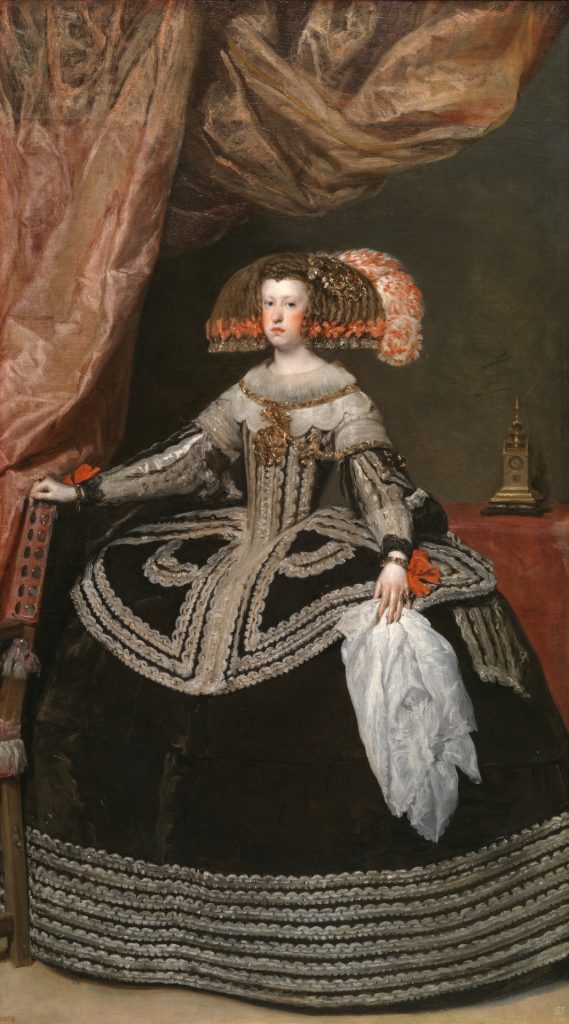
For the artists working for the church, for example Caravaggio, it was the Bible that provided the stories. Each institution had its favourite themes, and the artist was in some way serving that institution.

However, it can also be said that works of art tend to be more successful when the artist is in emotional contact with the subject, when the artist’s will in painting a particular subject is seen, in this way art becomes a direct communicative medium of the artist to the viewer, and the artist is no longer a passive actor in the painting.
The world of institutions such as the court or the church partially changed as a result of social events such as the enlightenment, and the emergence of new social classes such as the bourgeoisie. As early as the 17th century, during the “age of enlightenment” and then during the Romanticism of the 18th century, artists sought to change these conventions. But the real turning point came with the arrival of “modern art” in the late 19th century. The term is associated with art in which the traditions of the past were set aside in a spirit of experimentation.

In this period, not only did the subjects of art change, but also the figure of the artist himself. Artists became more autonomous, thinking of the idea of “art for art’s sake,” and modern artists experimented with new ways of seeing and new ideas about the nature of materials, the functions of art, and the choice of subjects. During “modern art” the first stones were laid for “abstract art.” With abstract art, you can also say that the subject is what you see. This includes shapes, colours, lines and other elements.
Abstract art is understood to be subjective, which leaves the subject available for interpretation. One may believe that all art is subjective, and that is a debate for another time, but the important part is that in order to determine the subject of abstract art one has to do more personal research than one could do with something clearer, such as a portrait.
Characteristics of the movement. The main categories of subjects
We have seen that a subject in painting can be many things. The term subject in art refers to the main idea that is represented in the work. The subject in art is basically the essence of the work. To determine the subject of a particular work of art, we can ask several questions: What is actually represented in this work of art? What is the artist trying to express to the world, what is their message? And how is he or she conveying this message?
There are several “basic” subjects that appear often in the history of painting, that is, in different periods and for different artistic currents there are certain subjects that are repeated, becoming great classics. Some of the most popular subjects in painting have been identified. Here is a list of the most popular subjects we can find in painting.
The most popular subjects of art painting:
Landscape painting
A landscape painting or drawing refers to a work of art whose main focus is the natural landscape. Here the artist depicts different natural scenery such as mountains, forests, cliffs, trees, rivers, valleys, etc, including impressionist and abstract landscapes. The Earth is a wondrous creation, full of colour and rich in diversity. From arid deserts to lush rainforests, from swelling oceans to cloudy skies – the earth offers endless inspiration to visual artists. Nature’s palette is everywhere you look. Throughout history, artists have found endless inspiration in the mysterious beauty of nature and the grandeur of its varied landscapes. It has always been a subject of great inspiration for artists, and also of great ease and immediacy as it surrounds us at all times.

Still life
It is a set of inanimate objects arranged together in a specific way. The great peculiarity of still lifes is that they can show us a new way of looking at the ordinary objects around us. Once placed in a specific arrangement and then captured with paint, ink, pastel or any other medium, objects take on a whole new meaning. They are imbued with life beyond the ordinary. Their existence is recorded in time, and the artists are the protagonists of this action.

Portrait and human figure
It is the image of a particular person. Often the purpose of a portrait is to store an image of someone for the future. It can be made by painting, photography, sculpture or any other medium. Some portraits are made by artists just for the sake of creating art, rather than on commission. Human body and face are fascinating subjects that many artists like to study in their personal work. Portraits are effective and convincing when they tell us something about the person. A good portrait is not only a visual representation of a person; it also reveals something about the person’s essence. What the portrait reveals may not be entirely obvious: sometimes it may be cleverly implied through a certain expression or pose, an included object, or the artist’s use of colour. Sometimes the person portrayed may become iconic, representing a larger group of people from a specific period who have something in common.
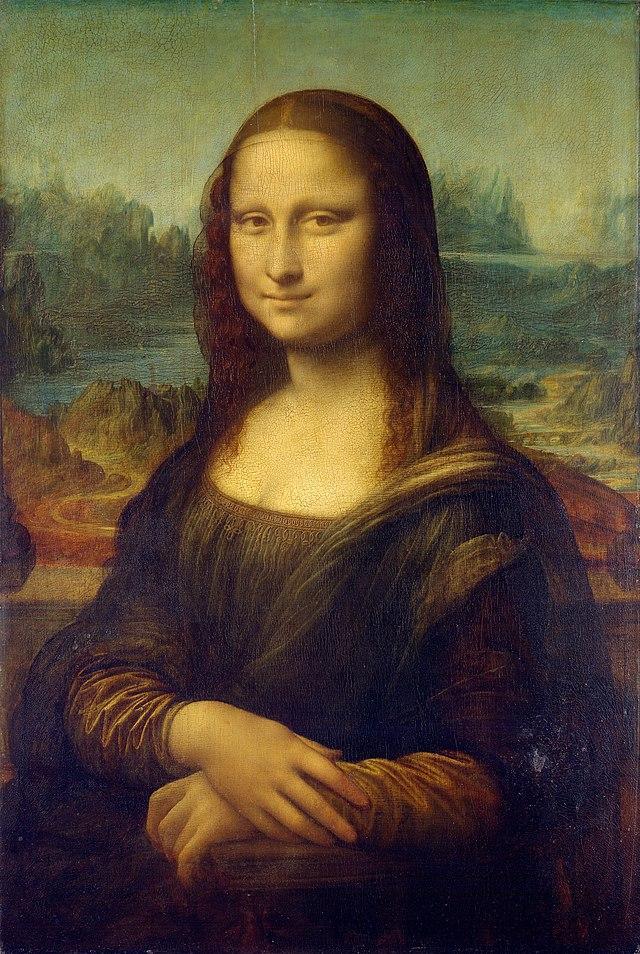
Nature and wildlife
A focused view or interpretation of specific natural elements: the exploration of nature in art can take endless forms because nature offers us such a wealth of inspiring phenomena.

Abstract
It is a non-representational artwork. Abstract art is like visual poetry. However, instead of words and phrases, abstract artworks use colours, shapes, lines, patterns, and textures to create a visual dance of the spirit. Here, the subject matter is often more to be interpreted than easily recognized.
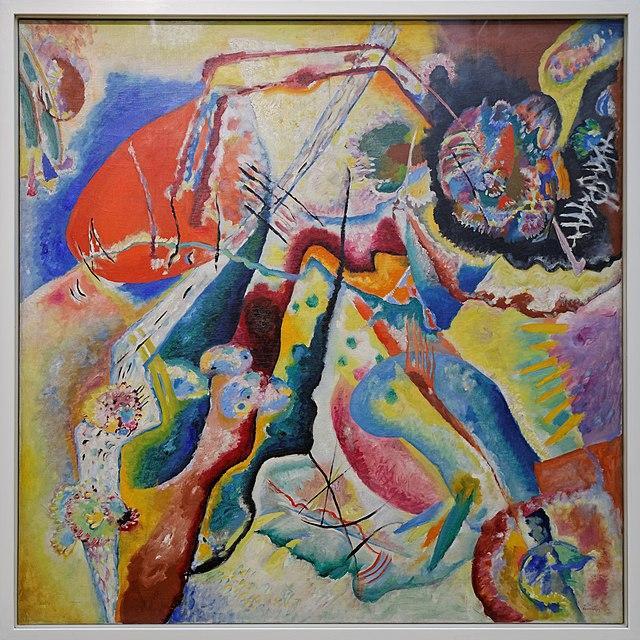
Nudes
That of the nude is an artistic theme consisting of the representation within various artistic media of the form of the human body (both male and female), nude or semi-nude. Nudity in art comes to reflect the social norms in place, as a whole, both in aesthetics and in the conception of morality, of the time and place in which the work was performed. Many cultures tolerate nudity in art far more than they tolerate nudity in real life, with different parameters as to what is considered acceptable or not.

We must remember that all painters are to some extent influenced by those who came before them. While it is true that all painters compare themselves, to some extent, with those who preceded them, we must also say that some subjects are definitively associated with their authors, as the individual works of the artists have become so famous that it is now impossible to untie the subject given by a specific artist. A good example of this situation are associations like Van Gogh’s Sunflowers, Degas’ Dancers, Cézanne’s Mont St Victoire.


Pedagogical approach
Why is this theme relevant to adult learners?
In every painting one can identify a subject well or poorly, and every painter paints a certain subject and emphasises it, whether it is with size, colour, chiaroscuro, or perspective. Therefore, it is important, when approaching art, to recognize that there are several characterising elements that can be analysed: such as the use of colours, or the artistic style of a particular artist, the use of perspective, or even the choice of subject to be painted. In this way, each person learns not only to look at art, but to be able to see and appreciate it.
What are the learning outcomes of embedding this art theme with an educational activity?
With this activity, learners will be able to discover different subjects in art history. Indeed, the activities are set so that learners can learn the power of light reflecting on objects and how it can influence artistic views.
How to do it: strategies, tools, and techniques
Learners will take both active and inactive participation in their own learning. They will learn both through knowledge and discovery of the topic and through practical, real-world examples and personal activities.
Artworks
Artwork #1 Pierre-Auguste Renoir, Nude woman sitting on a couch, 1876

- Its position-relation to the theme: Nude woman sitting on a couch, is an 1876 painting in the Impressionist style by the leading French artist Pierre-Auguste Renoir.
- Short description: Here Anna, the model, is depicted in the guise of a nude young woman with a rosy and captivating body, caught looking over the observer’s shoulder, tantalising with a provocative and unequivocal pose. The woman, seated on a chair, towers in the centre of a room devoid of light but enlivened by the light colour of the various fabrics haphazardly piled here and there.
- Location and European dimension: This work is located in the Pushkin Museum of Fine Arts in Moscow, Russia.
- Possible educational exploitation: Here the subject chosen by the artist is a young woman, painted naked in the room. Pierre-Auguste Renoir was a French painter, considered one of the leading representants of Impressionism. The nude is a very frequent theme in the works of the Impressionists, which often stirred criticism from the Academy and from French society of the period in general. It may be interesting to see how the Impressionists brought the nude onto artistic canvases in a different way from earlier ones.
Artwork #2 The beheading of St. John the Baptist, Caravaggio (1608)

- Its position-relation to the theme: The Beheading of Saint John the Baptist is an oil painting by Caravaggio, done in 1608. It is a religious scene. Caravaggio often depicts religious scenes or scenes taken from Holy Scripture. This is a typical theme of the historical period in which he painted.
- Short description: The canvas depicts the undaunted jailer, the executioner preparing to wield the final blow, a young woman carrying a basin on which she will collect the Baptist’s head, and an old woman covering her face with her hands in horror; on the right, two prisoners watch from a grate as the scene unfolds.
- Location and European dimension: The painting is preserved in the Oratory of St. John the Baptist of the Knights in the Co-Cathedral of St. John in Valletta, Malta.
- Possible educational exploitation: For a long time religious themes have been at the centre of artistic production. It may be interesting to see the relationship between church, religious message, and art.
Artwork #3 J. M. W. Turner, The Fighting Temeraire tugged to her last Berth to be broken up (1839)

- Its position-relation to the theme: The Fighting Temeraire tugged to her last Berth to be broken up is a painting by J. M. W. Turner. Turner is very famous for his paintings of desolate, misty landscapes, with nature very much preponderant over man, exuding strength and instilling fear.
- Short description: The painting depicts a landscape, boats in the sea, the sky with dawn colours. The colours are pastel and light, with shades of blue and pink, with the sun in the distance.
- Location and European dimension: The painting is located in the National Gallery, in London.
- Possible educational exploitation: Turner is very famous for landscape paintings. See his other works and analyse how the painter depicts different landscapes.
Artwork #4 Diego Velázquez, Portrait of Queen Mariana, c. 1656

- Its position-relation to the theme:Portrait of Mariana of Austria is a painting by Diego Velázquez, oil on canvas. Velázquez painted during the period when many painters worked for the court in the nobles. The artists painted moments from the lives of the nobles, thus becoming like court photographers.
- Short description:The painting is a portrait. A young woman is depicted, she has pale skin, her cheeks are pink, her hair is coiffed and combed. She has a big court dress, fine and expensive. The dress is rich in detail, and looks very serious. This contrasts with the girl’s young age and childlike face.
- Location and European dimension:The painting is now at the Prado Museum.
- Possible educational exploitation: Uses paintings of court nobles to find out more about the role of painters in noble courts, and how nobles had their portraits painted.
Artwork #5 Edgar Degas, Dancers , 1884-1885

- Its position-relation to the theme: “Dancers” is one of the series portraying dancers, created by Edgar Degas. This painting is one of the most famous ones done by Degas. It is almost one of the most representative ones of Degas’ work.
- Short description: Young dancers are represented. They are dressed in dancers’ consonant dresses, their hair tied in ponytails. The light is dim and the focus is on the dancers’ gestures.
- Location and European dimension: The painting is located in the Musée d’Orsay, in Paris.
- Possible educational exploitation: Degas is famous for painting several works with the subject of ballerinas. By now this subject is inescapably linked to him. Discover other works.
Artwork #6 Wassily Kandinsky, Painting with a Red Stain, 1914

- Its position-relation to the theme: Painting with a Red Stain is a painting by Wassily Kandinsky. Kandinsky is one of the most famous artists for abstract art.
- Short description: The painting is very coloured, Kandinsky uses blue, yellow, red, orange, green, purple. The subject here is not so clear. But this is normal for abstract art. Very often, the painter doesn’t even identify the subject with the artwork title, opting for a more elusive one, leaving space for interpretation.
- Location and European dimension: The painting is now located in the Pompidou Center, in Paris, France.
- Possible educational exploitation: Abstract art is very interesting. If we cannot identify a subject it doesn’t mean that the artist didn’t know what he /she was painting. Analyse different abstract artists, such as Mondrian, Kandinsky and Pollock.
Artwork #7 Water lilies and Japanese bridge, Claude Monet, 1899
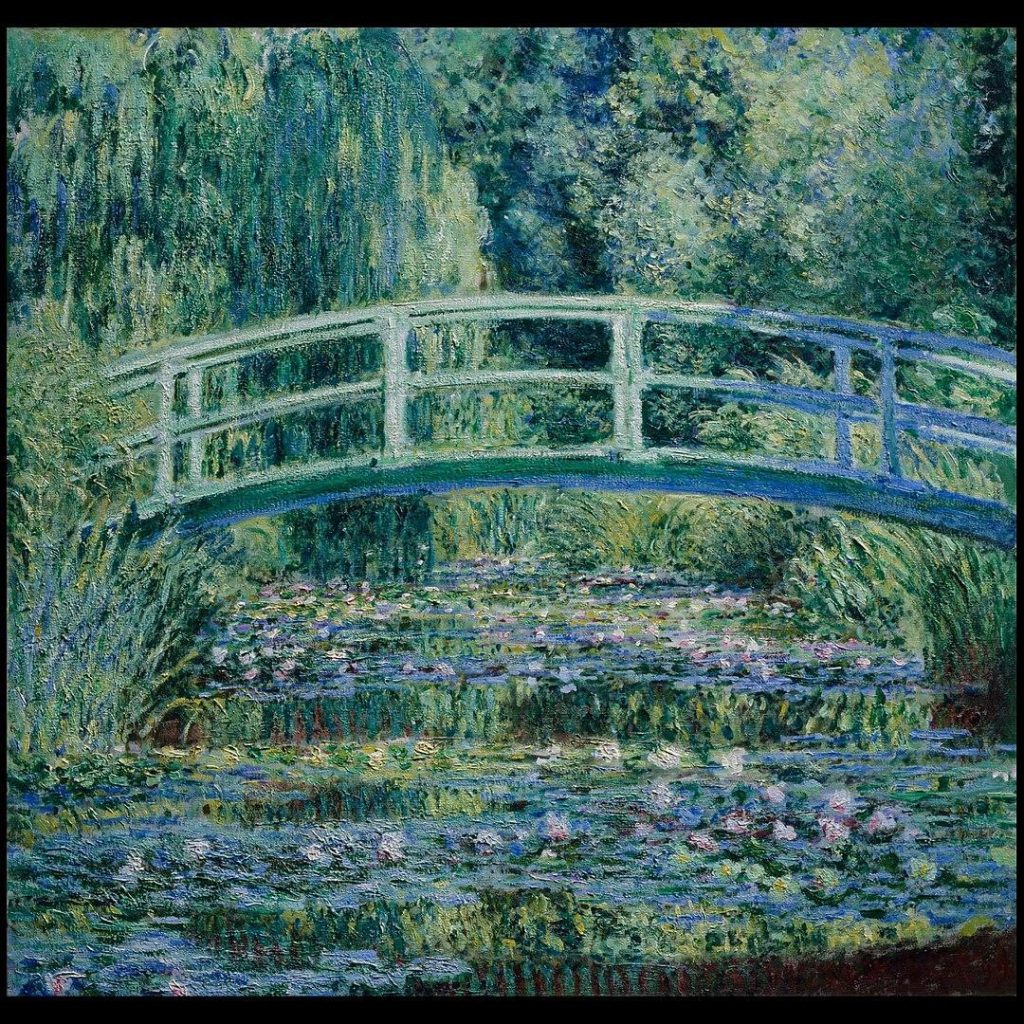
- Its position-relation to the theme: The water lily collection includes more than 250 oil paintings by Claude Monet. Monet’s water lilies now represent Impressionism and are among the most representative works of art of the 20th century.
- Short description: In this painting, Monet painted his water lilies with a Japanese Bridge above it. The tones are complimentary in the blue, green and purples hues. They are representative of the impressionist movement. The subject of water lilies is forever linked to Monet.
- Location and European dimension: The painting is located in the Princeton University Art Museums in the USA.
- Possible educational exploitation: Monet’s prolific series of waterlilies is forever linked to how artists can represent nature. Discover other works as representative of some artists as this one can be.
Artwork #8 Juan Sánchez Cotán, Still Life with Game Fowl, Vegetables and Fruits, 1602
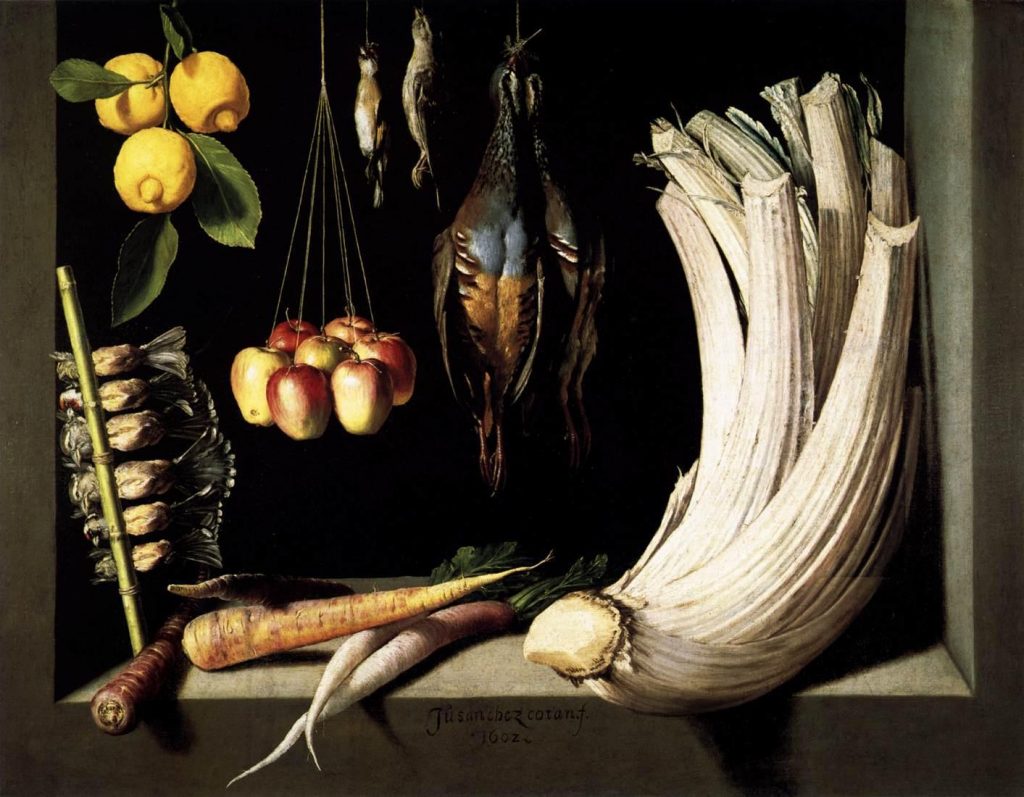
- Its position-relation to the theme: Still Life with Game Fowl, Vegetables and Fruits is an oil on canvas painting by Spanish painter Juan Sánchez Cotán, an example of one of the earliest still lifes painted in Europe.
- Short description: A game fowl from the title is a bird of any of various strains of domestic fowls. The painting depicts different game, such as greenfinches, goldfinches and sparrows, some hanging fruits, such as lemons and apples, and, on the right, the huge figure of a thistle. The subject of the painting is a still life.
- Location and European dimension: The painting is preserved at the Prado Museum in Madrid.
- Possible educational exploitation: Everyday objects, fruits, vegetables or animals are depicted here, isolated and depicted independently of the presence of humans, starting with the ‘silences’ in which the scenes seem to be immersed, focused on the careful and meticulous investigation of the objects of everyday life and nature. It can be interesting to question how compared to the seventeenth century man’s relationship with the elements of daily life has changed.
Artwork #9 Gustave Courbet, The Desperate Man, 1843
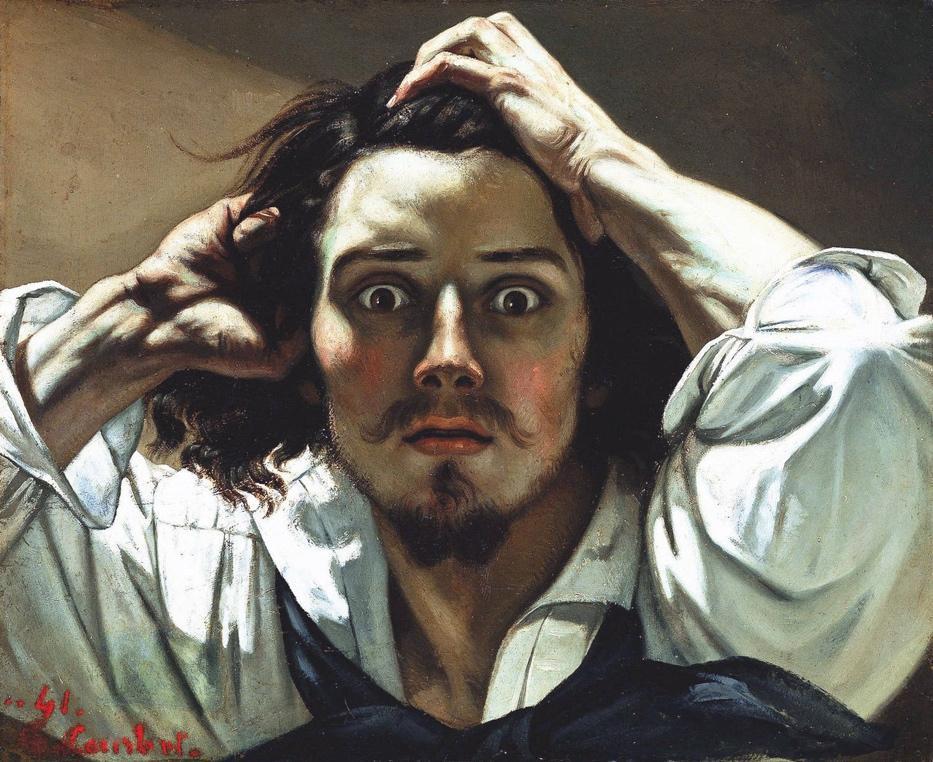
- Its position-relation to the theme: The Desperate Man is a painting by Gustave Courbet. It is a self-portrait, and it was completed by Gustave Courbet in 1843-1845 and ranks among the finest paintings of his entire career.
- Short description: The painting depicts the artist’s face, with his hands in his hair, and dressed in a white shirt. The light enters from the left side and floods the artist’s face to his right. His long hair hangs loose and the position of his hands gives an impression of anxiety. The eyes are also wide open, protruding, and looking directly at the viewer, creating a strong connection between us and the artist himself.
- Location and European dimension: The painting is now in the private collection of the Conseil Investissement Art BNP Paribas but it was displayed in the Musée d’Orsay’s 2007 Courbet exhibition.
- Possible educational exploitation: It is said that when he made this self-portrait, Gustave Courbet had been rejected several times by the Paris Salon for other works of art, and so the image before us can be thought of as entirely reflecting his frustrations at the time. It can be interesting to see the role of critics on paintings, and how opinion on a certain painting can change depending on the historical period.
Artwork #10 Giuseppe Arcimboldo, Rudolf II of Habsurg as Vertumnus, 1590
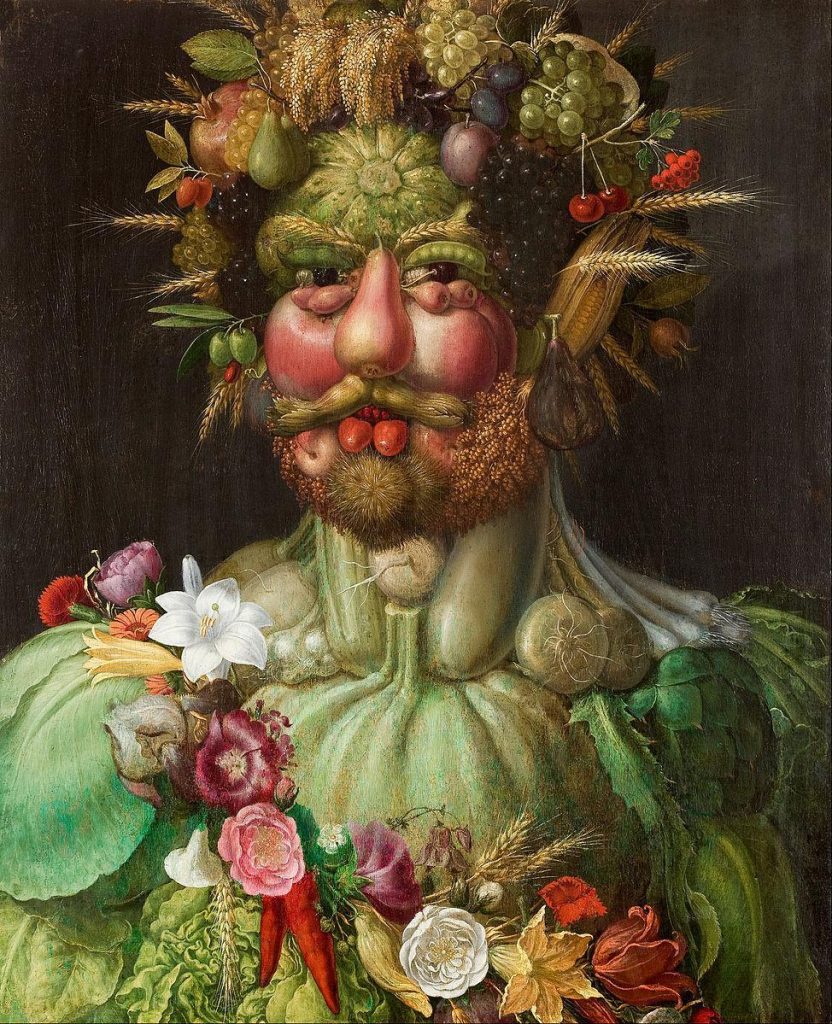
- Its position-relation to the theme: Vertumno, also known as Rudolf II of Habsurg as Vertumnus, is a 1590 painting by Giuseppe Arcimboldo depicting Emperor Rudolf II of Habsburg as Vertumno, the Roman god of the changing seasons.
- Short description: The emperor’s portrait is made from plants, flowers and fruits of all seasons: pumpkins, pears, apples, cherries, grapes, wheat, peas, onions, cabbage leaves, chestnuts, figs, mulberries, pomegranates, various gourds, etc. The portrait is intended as an imperial allegory, with the emperor seen here as ruler of all. The variety of flowers and fruits of all seasons indicates the return of a golden age under the emperor’s rule.
- Location and European dimension: This painting is now preserved in Skokloster Castle in Håbo, Sweden.
- Possible educational exploitation: It is interesting how the artist uses still life (flowers, fruits, vegetables), to paint a subject that is a portrait, how he uses inanimate objects to present an animate one. Learn more of Giuseppe Arcimboldo’s work in this style, and discover other paintings where different subjects are intertwined.
Practical activities
Activity 1 – Guess the subject
Aims
To make learners more autonomous in analysing works of art, and be able to appreciate art.
Materials:
Have access to a series of selected paintings (or have a computer with Internet access)
Preparatory stage for educators/mediators
To select a series of works, with different subjects.
Development
Learners will have to guess the subject of the painting, justifying why they chose it, how the artist emphasises the subject with perspective, colours, size, title.
Activity 2 – Pick your subject
Aims
For learners to better understand how the choice of a subject can be made, and how the choice can be motivated and enhanced.
Materials
- magazines with images, or photos
- material for cutting out and pasting
- sheets or poster board for pasting.
- Preparatory stage for educators/mediators
Magazines or visual material with different subjects can be prepared. Teachers can show different works of art that have been made over time, paintings from different artistic movements, identifying for each work the subject of the painting.
Development
Learners can thus see some examples of artworks over time that have had determined subjects, such as Van Gogh’s Sunflowers, Turner’s landscapes, Modigliani’s nudes, etc. Secondly, by looking at magazines and visual material, they can choose their own subject and create their own personal painting, choosing a subject and how to enhance it. So they can test themselves with subject choice.
4 tips to help you find your subject in painting:
- Try to “visualise and feel” your subjects in your environment: the desire to paint comes from what you “feel in your stomach,” and this is different for everyone.
- Share and show your work: showing your paintings to and sharing them with friends or other painters can be very encouraging, stimulating and can give you new ideas. But it is important for viewers to be kind, because any negative criticism can have an opposite result.
- Drawing for pleasure: It is important not to force yourself to paint; painting should be a time of joy or relaxation.
- Art books and exhibitions: if you are lucky enough to have a library in your neighbourhood with good art books, go check it out every now and then to be inspired by what other artists are doing. Find out about new exhibitions in your city.
…but most importantly, have fun discovering the world of art!
